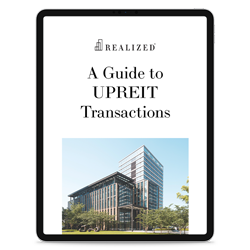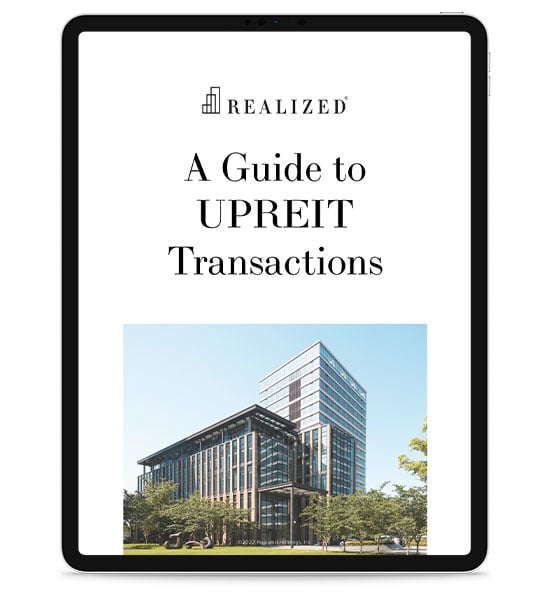
As a brief background: In a traditional REIT structure, the trust owns property directly or through limited partnerships. However, suppose an investor contributes real property to a REIT. In that case, the investor must recognize any increase in the value (fair market value over tax basis) that has occurred and would owe taxes on that amount.
In a UPREIT (an Umbrella Partnership Real Estate Investment Trust), the umbrella partnership (i.e., operating partnership) manages and indirectly owns the assets through the REIT.
The investor contributes the property to the Umbrella partnership through an IRS-sanctioned 721 exchange for Operating Partnership Units instead of REIT shares. This process allows the taxpayer to defer the gain until they convert the OP Units to shares (or until some other triggering event occurs in the UPREIT organization).
What place does debt play in the transaction?
In a UPREIT transaction, the operating partnership usually assumes or refinances the debt that encumbers the real estate being contributed to the partnership. The seller is then allocated a certain dollar amount of debt for tax purposes.
Let's dig a little deeper to see how debt is treated in a UPREIT. Suppose that the investor (in this case, the contributor of real property) contributes an asset to the partnership, and with it, the UPREIT takes on an unqualified liability. In that case, the transfer would be considered to include money or other considerations and potentially subject to the disguised sale rules. The UPREIT debt must be a qualified liability to be excluded.
A qualified liability includes the following:
- It was incurred more than two years before the contributor transferred it to the partnership and has been attached to the property for the two years, or
- It was incurred within two years but not in anticipation of the contribution of the property, or
- It can be allocated to capital expenditures made for the property, or
- It is related to the business taking place on the property, and the business assets are also transferred.
Mortgage debt is often a qualified liability, but not always.
If the property has mortgage debt in place for at least two years (like the above rules on other liabilities), it will usually be recognized as qualified. If the mortgage debt is newer than that, the determination will depend on how the borrower used the funds. Money borrowed for improvements may well be designated as qualified, but other purposes may result in a finding of unqualified liability.
What is Section 752?
After the successful settlement of the transaction with the application of the disguised sale rules, there is another debt-related issue to consider.
Suppose that the investor contributes assets with liabilities that exceed their tax basis. The taxpayer must ensure that they receive an allocation of adequate debt within the Operating Partnership to offset the excess. In other words, if the contributor ends up with less debt following the transaction, that would be considered a gain and trigger a taxable event. The investor must receive a liability allocation to shield his interests from that occurrence.
Protecting the contributor from future debt reduction exposure
Since maintaining adequate debt levels is vital for the investor to avoid inadvertent exposure to a gain and the accompanying taxable event, the subject is usually included in the Tax Protection Agreement portion of the UPREIT transaction.
The TPA commonly requires the Operating Partnership to reimburse the contributor for costs incurred if it sells the asset (triggering a gain). Still, it may also require the partnership to be responsible for maintaining a level of liabilities to cover the contributor's negative tax basis and allocate them under nonrecourse rules.
This material is for general information and educational purposes only. Information is based on data gathered from what we believe are reliable sources. It is not guaranteed as to accuracy, does not purport to be complete and is not intended to be used as a primary basis for investment decisions. It should also not be construed as advice meeting the particular investment needs of any investor.
Realized does not provide tax or legal advice. This material is not a substitute for seeking the advice of a qualified professional for your individual situation.



